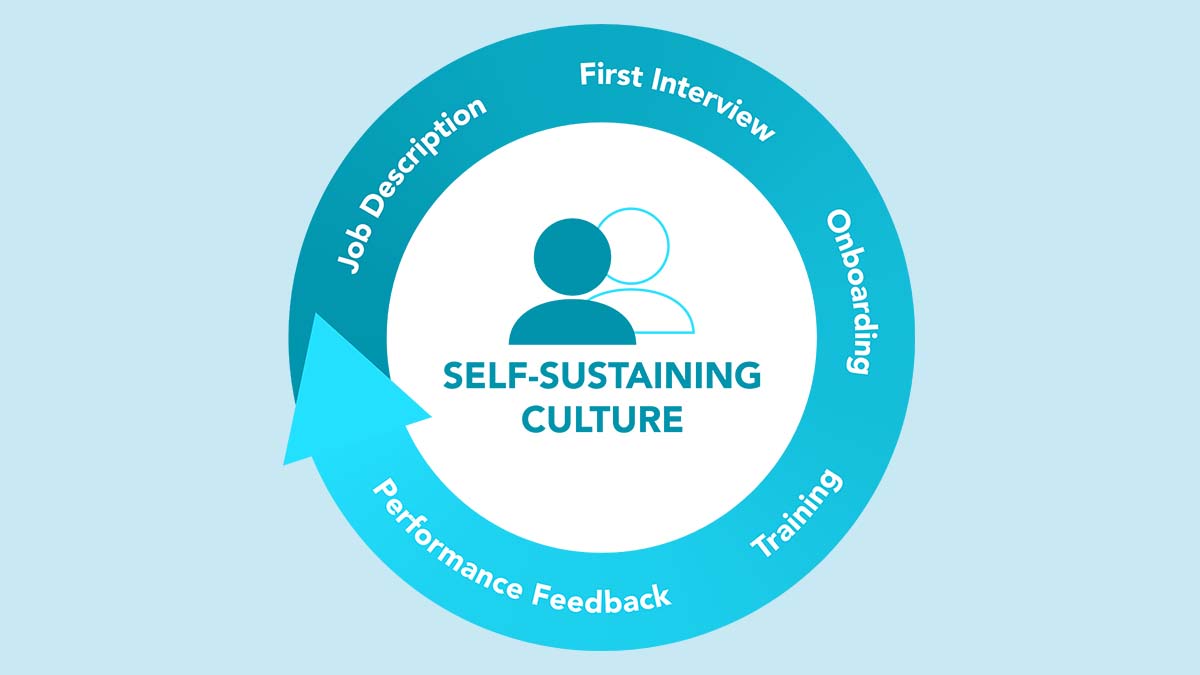Building a culture of growth starts with planning and directly involves a commitment from your existing and even future team members. Being a great leader means that it’s no longer about you. It’s about the people you lead and the growth and success that they experience. One of the hardest things, even for the best and most experienced leaders, is to implement systems and create processes that manage themselves. This two-part series will help ensure that you are recruiting and hiring the best and most diverse candidates while keeping top talent at your company.
The following best practices are meant to help you create stronger internal processes and a culture that will help your business scale, no matter if you run a small startup, a mid-size business or a large enterprise. I write this not to be followed exactly step by step, but to be used as a framework to build on and take to the next level within your specific culture. You will know you have done everything right when people think it’s easy to attract and retain the right people.
In Part 1, we’re discussing how to ensure a smooth and effective interview process to attract and close deals with the employees you want most. Let’s start at the beginning:
The Right Job Description
According to Leadership IQ, 46% of new hires fail within 18 months. Surprised? What might come as even more of surprise is that that 89% of the time, new hires failed due to attitudinal reasons and only 11% of the time for a lack of skill. Before you begin the hiring process, make sure to take the time to figure out a) who your team needs, b) what they will be responsible for, and c) what they need to succeed. By doing this you can ensure that you are creating an intriguing, thorough and accurate job description to attract people with the correct skill set and right attitude.
Here are some key components of a quality job description and supporting documents:
Job title – Don’t be too generous. Make sure the job title fits the role, but if you are not 100% confident in the title, I find it best to err on the side of listing a more junior title. Remember, it’s easier to promote someone for exceeding expectations than to demote them because they are not living up to a specific role. Most candidates will come in and ask for a higher title, but zero will be okay with a demotion if they have “bitten off more than they can chew.” This is called the “Peter Principle”, where people excel to their highest level of incompetence.
Purpose statement – Define exactly what the candidate will be doing for a specific role, as well as why they are doing it. Everyone wants to make a difference, so take the time upfront to point to their impact on the bottom line. Very few companies take the time to plan before the job requisition is approved and posted. With the right planning, it’s amazing how much time you can save when both the candidate and the interviewer can get down to the real purpose of the role.
Performance tracking and KPIs – Lay out a 90-day success plan and outline how candidates are going to be evaluated, assuming they get the position. Now that you have the job requisition complete and the purpose of the role defined, start thinking about the future. This is a great example of how processes can help culture. It’s human nature to want to understand what is expected of you. Setting up the processes that support successful talent acquisition and retention will result in higher morale overall. By requiring hiring managers to understand exactly what the performance indicators are before the role is posted, and making sure that those KPIs are discussed during interviews, ensures that there is no misunderstanding 90 days out.
The First Interview
A strong, long-lasting relationship starts with the very first interaction. This includes communication, scheduling, and finally the interviews. How can you ensure a quality first impression while getting the information you need from a candidate?
Start at the beginning – From the moment a candidate reaches out, be thoughtful about your brand and culture. Who is responding to their emails or calls? How long does it take to respond? Are your interactions “on brand”? I always say that it’s called recruiting, not just hiring, for a reason. Top talent will be evaluating and interviewing you from their very first interaction, and they won’t let you off easy.
Screen out the “maybes” – Make sure to screen out candidates that are not a good fit before you even call them back. This avoids interview bias and allows you to spend more time with the candidates who are much better suited for the role. There is a great case study that showed that applicants who were selected by their resume alone were more successful in their new roles than those who were hired after in-person interviews. Why? As soon as you put two people together, we are genetically motivated to try and figure out how to work together. By only selecting new hires from their resumes, it forces managers to be more critical on their education, certifications, career path, and most importantly, their career trajectory.
Ask more open-ended questions – If you really want to learn about the person you are interviewing – stop talking! Ask non-leading questions that force candidates to engage in a conversation versus regurgitating their resume or portfolio. Collect examples and anecdotes that demonstrate their real behavior, not what they “would” do in a situation. Don’t ask: “We have a culture of teamwork here; do you work well with teams?” Why? This is not only a leading question; it also doesn’t allow the candidate to expand. If you want to truly find out how they work in a team, ask something like, “Can you describe some examples of how you work with teams?” Once you’ve started the conversation, follow up with questions like “How did that make you feel?” and “What would you have done differently knowing what you know now?” to get to the meat of the candidate’s answers.
Think about your interviewers – Make sure the people presenting your company in an interview are trained. Just because they’re good with people does not mean they know how to properly screen candidates. Pay attention to everyone who is involved in the interview process from beginning to end, and how the candidate engages with them. Were they rude to the receptionist? Did they thank the intern who grabbed them water? These are small details are often overlooked, but are key indicators of personality and how a candidate will work out in the long run. At Media Temple and GoDaddy, we gave the receptionist a score card to fill out for each candidate. It was great to hear her feedback about the candidates when they came in.
Mix it up – Have multiple interviews in different settings. People start to let their guard down as they feel more comfortable, and, let’s be honest, a conference room isn’t the most comfortable place to chat. Coffee, lunch, and even a walking meeting are available options. It’s amazing to see how much people’s demeanor change after a few interviews.
Don’t take them at face value – Candidates are obviously on their best behavior during interviews, so it’s up to you to watch for the small “tells” that reveal the candidate’s true personality. I usually discover these when they are talking about other people and hearing their reaction towards others. Back at Oracle, I would take my prospects out to lunch. Since I hired many experienced enterprise sales executives that knew how to work the system, I had to figure out how to get them to show their “real selves.” I would take the candidates to the same restaurant where the waiters knew I was conducting an interview. They would do things like ignore us, bring the wrong food, and even spill the water every once and a while. All these antics were a tool to find the “tell” that showed how the candidates treat others, especially someone that they did not necessarily have to be nice to.
Remember, you are ultimately responsible not just for hiring the best and most diverse candidates, but also for setting up your new employees for success. As a leader, you have an amazing opportunity to change not only the lives of the people around you, but the many others that touch the people that you lead and may join your team in the future. My grandfather always told me, “it takes a lifetime to build your name, and one bad thing to destroy it.” Bringing on the right people to the team is one of the most important jobs for executives. When you recruit, hire, and retain the best of the best, your role as a leader becomes much easier.
Stay tuned for Part 2 of this series where I’ll discuss best practices for onboarding, training, and ongoing performance monitoring to ensure that you retain the best talent and drive a culture of growth and performance.




